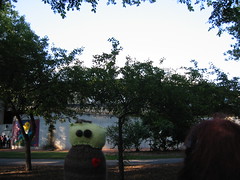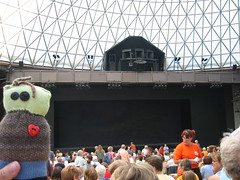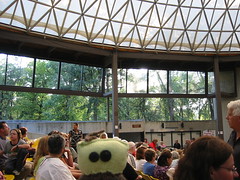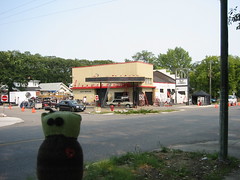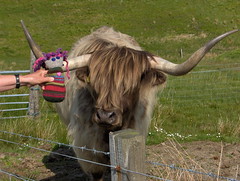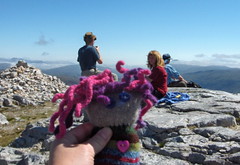Here is my original essay:
As I’ve listened to this series on Sense of Place, I’ve slowly realized how my knitting does, in fact, reflect my surroundings. I’ve only been knitting for five months, so I assumed it was too early for me to think in terms of such an influence on my craft. I wish I could claim that my knitting is shaped by the endless stretch of Montana grasslands, or the heart-stopping, gut-wrenching beauty of Crater Lake in Oregon, or even the lights of a city nightscape, but I cannot. On the contrary, I cannot leave my home for more than a few hours a week. I am enclosed within the walls of chronic illness, a disability that has remade my life in its own image.
I fell ill at the age of 26, just twelve years and several lifetimes ago. Whether through prescience of my future, or dumb good fortune, I had already slept beneath the big sky of Montana. I had hiked down to the edge of Crater Lake. But I was not a knitter then. Had I been, I suppose I would have knit fair-isle sweaters for nights by a campfire, or thick wooly socks to go with my hiking boots. Complicated lace charts would not have frightened me the way they do now.
My knitting reflects the emotional and spiritual place I occupy within this strange disabled life. I need to knit simple projects that require little attention to detail because I cannot concentrate very well. My energy is my most precious resource, so every stitch must be both pleasurable and successful. I strive to create productivity and accomplishment in my day, defying my body’s restrictions. I absorb every expression of the craft of knitting, from patterns to books, from blogs to podcasts, so that I can transport myself outside my walls towards the community of knitters that I cannot visit in person.
My knitting also reflects my physical place in a simple way. I make two kinds of projects: gifts for treasured family and friends, and comforting objects for myself. The gifts allow me to symbolically travel out into the world with loved ones, since there are too many times when I cannot go with them. The things I knit for myself are simple, warm, soft. Because I spend my life confined to my home, I try to make it a place of simplicity and comfort. I’ve made quilts, drapes, pictures and other things, and each object tells a story about what was happening in my life at the time. I remember where I bought each yard of fabric or skein of yarn.
In May, my husband and I celebrated our tenth wedding anniversary. We met shortly before my illness, and he has walked a difficult road with me. To honor this milestone, we traveled to New Mexico, a place I had long dreamed of visiting. The trip came with a high price, paid with pain and exhaustion, but it also felt like we were playing hooky from our day to day existence. We visited a small wool co-op, and I purchased three skeins of natural colored wool. When I got home, I chose two Barbara Walker stitch patterns: Navajo basket and tri-color tweed. I had never knit without a pattern before, but I calculated my gauge, held my breath, and somehow knit two pillows for our family room. The shades of brown and texture of the stitches remind me of the New Mexican landscape. I use the pillows every day to support my back or cradle my head. Most importantly, the process of this knitting keeps me connected to the most important place of all – the part of me that is not illness or disability, but strong and brave and powerful.
